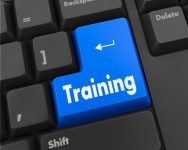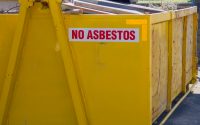Training is the number one element in accident, incident, and illness avoidance. Check the articles here frequently for the latest and best tips on techniques, trends, programs and equipment. We offer explanations for group, one-one, or self-directed situations, in both general and specific work activities. Your training will be both easier and more effective if you do.
OSHA recently issued a final rule requiring construction employers to take steps to protect workers from confined space hazards. (Previously, confined space rules only applied to general industry.) Take a look at the new BLR® infographic below to learn the essentials of the new rule—and what you need to do to comply. Your one-stop safety […]
Organizations that leverage mobile technology in their learning functions are reaping the benefits. In fact, mobile learning, known as mLearning, offers many opportunities for trainers and employers to engage learners in the learning process. In today’s Advisor, we get expert advice on implementing an mLearning program. “We believe that mobile technology can become an engine […]
In today’s Advisor, we present an exercise from BLR’s Training the Trainer audio presentation. This exercise allows trainees to begin to develop a training session that meets a need at their workplace. Trainees will write objectives, plan content, plan methods of encouraging participation, and develop exercises or proficiency demonstrations for evaluating participants. First, review with […]
You may already train your supervisors on how to prevent workplace violence. But should, God forbid, an incident happen in your workplace, have you trained them on how to cope with the aftermath? In today’s Advisor, we give you valuable training information on this difficult topic. The material in today’s Advisor is adapted from BLR’s […]
Initial training is certainly critical on the job, especially when it comes to safety training. But one-and-done training is not adequate for fostering continuous improvement in your organization—or continuous professional development in your employees. In today’s Advisor, we look at how one well-known international organization provides ongoing learning opportunities throughout its workforce. Jiffy Lube® International […]
In today’s Advisor, we receive guidance from one of BLR’s experts on when volunteer training should or should not be paid. Here’s the question: Do you have to pay employees for time spent in a voluntary training session offered during their lunch hour? And here’s how our expert responded: Lunch-and-learns are used by some employers […]
In last Friday’s Advisor, we provided 7 ergonomic tips for using mobile devices safely. Today, we give several examples of how companies are using mobile devices for training. Tablet sales are on the rise, and the iPad® is leading the pack. Tech-savvy businesses have been at the forefront, incorporating tablets into everyday business functions. Now, […]
More and more employees are using mobile devices to accomplish their jobs. That opens up a new need for training. Today’s Advisor gives you expert ergonomic tips for using mobile devices safely. Not so long ago, only the folks in the front office used tablet computers. Now it seems these devices are everywhere, including on […]
DOT’s Hazardous Materials Regulations (HMRs) require that hazmat employees receive “adequate training” for their specific job duties. As a hazmat employer, you are left in the dark as to what “adequate training” actually means. As a matter of fact, DOT has written a letter of interpretation that states the agency’s position on the meaning of […]
Note: The OSHA industry standards for asbestos do not protect certain state and local government employees. The worker protection requirements under the Toxic Substances Control Act (TSCA) ensure that the OSHA General Industry and Construction Industry Standards under 29 CFR 1910.1001 and 29 CFR 1926.1101 are applied to such employees, including those performing asbestos-related work […]










